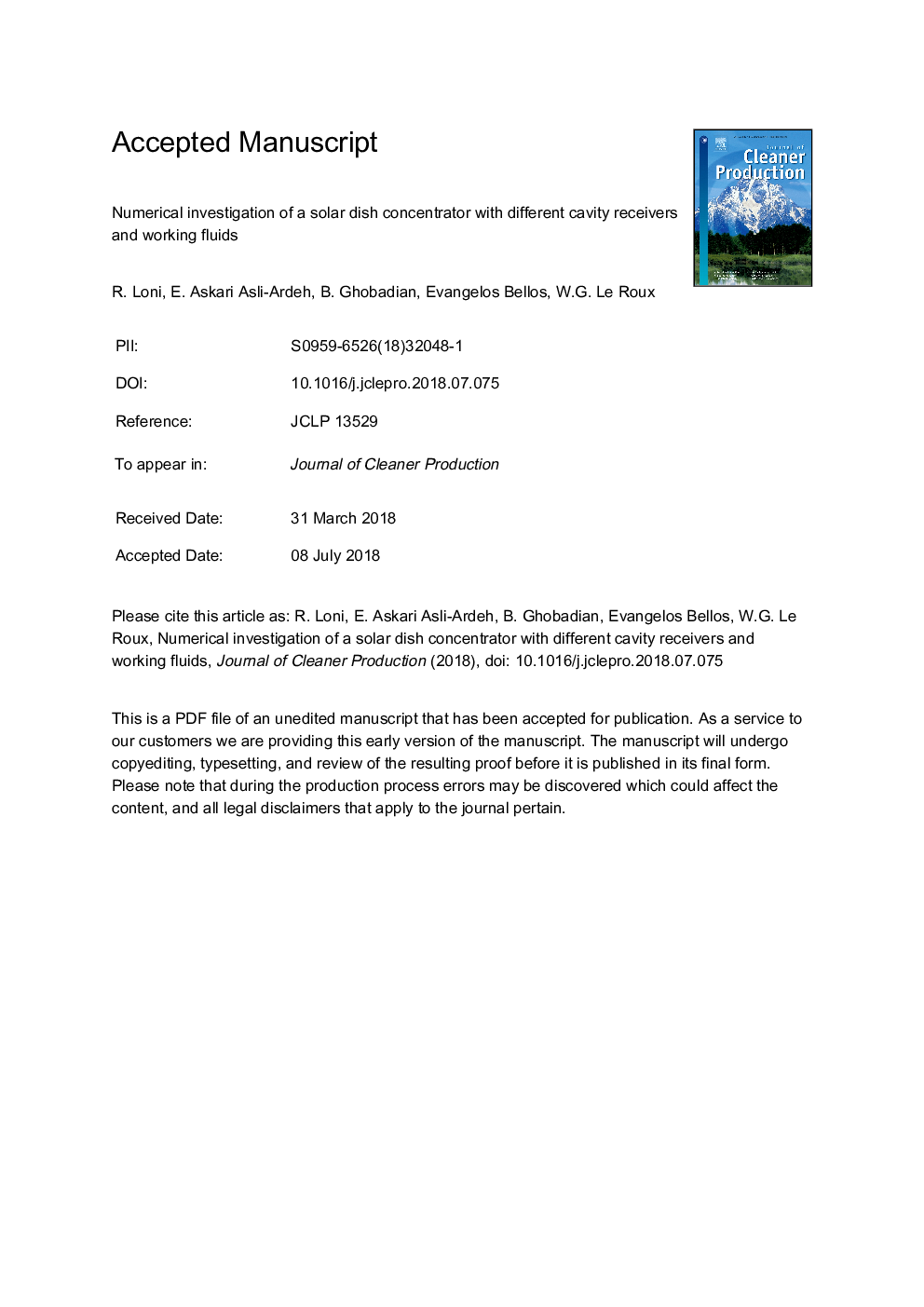| Article ID | Journal | Published Year | Pages | File Type |
|---|---|---|---|---|
| 8093651 | Journal of Cleaner Production | 2018 | 40 Pages |
Abstract
Solar concentrating technologies can produce heat for applications such as solar heating, solar cooling, industrial processes, desalination and electric power generation. For a solar dish collector, various solar receivers and working fluids at different flow rates can be used in different applications. In this work, three different cavity receivers are investigated for application in a solar dish collector using either water or Behran oil. A numerical model is used in the analysis, which is validated with experimental results from a hemispherical cavity receiver using oil as working fluid. The model is applied to compare hemispherical, cylindrical and cubical receivers under the same operating conditions using either water or oil, at a volumetric flow rate of 100â¯ml/s and solar irradiance of 800â¯W/m2, in order to determine the most suitable cavity for a specific solar dish. The system is investigated for inlet temperatures ranging from 40â¯Â°C to 90â¯Â°C with water as working fluid, and from 40â¯Â°C to 300â¯Â°C with Behran oil as working fluid. Emphasis is placed on the calculation of useful heat production, as well as pressure drop which influences pumping power. The exergetic efficiency criterion and the overall efficiency criterion are used in order to evaluate the useful heat production and the pumping power simultaneously. The high exergetic efficiency of the hemispherical cavity with thermal oil at high temperatures makes this case a promising choice for high-temperature solar dish collector applications. Moreover, water is found to be the best candidate for low-temperature applications since it leads to the higher thermal efficiency with lower pumping power demand.
Related Topics
Physical Sciences and Engineering
Energy
Renewable Energy, Sustainability and the Environment
Authors
Reyhaneh Loni, E. Askari Asli-Ardeh, B. Ghobadian, Evangelos Bellos, W.G. Le Roux,
